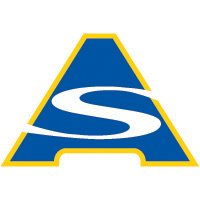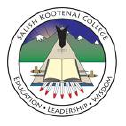What do they do?
Drive logging tractor or wheeled vehicle equipped with one or more accessories, such as bulldozer blade, frontal shear, grapple, logging arch, cable winches, hoisting rack, or crane boom, to fell tree; to skid, load, unload, or stack logs; or to pull stumps or clear brush. Includes operating stand-alone logging machines, such as log chippers.
Also known as:
Cutter Operator, Delimber Operator, Equipment Operator, Feller Buncher Operator, Grapple Operator, Grapple Skidder Operator, Harvester Operator, Hook Tender, Loader Operator, Log Loader, Log Loader Operator, Log Processor Operator, Log Stacker Operator, Logging Crane Operator, Logging Equipment Operator, Logging Shovel Operator, Processor Operator, Skidder Driver, Skidder Operator, Slasher Operator, Tree-Shear Operator, Yarder Operator
-
7.1%
Change
Ranks #14 in job growth rate50Job Openings
Ranks #28 in net job growth
-
State Technical College of Missouri
Linn, MO
-
Pittsburgh Institute of Aeronautics
West Mifflin, PA
-
SUNY College of Technology at Alfred
Alfred, NY
-
Pennsylvania College of Technology
Williamsport, PA
-
Putnam Career and Technical Center
Eleanor, WV
Looking for colleges that offer a specific major? Use the College Match Tool to find your best-matched schools and discover your estimated Net Price!
- Doctorate or Professional Degree (<1%)
- Master's degree (<1%)
- Bachelor's degree (5%)
- Associate's degree (5%)
- Some college, no degree (14%)
- High school diploma equivalent (49%)
- Less than high school diploma (26%)
People in this career often know a lot about:
- Mechanical - Knowledge of machines and tools, including their designs, uses, repair, and maintenance.
- Public Safety and Security - Knowledge of relevant equipment, policies, procedures, and strategies to promote effective local, state, or national security operations for the protection of people, data, property, and institutions.
- Production and Processing - Knowledge of raw materials, production processes, quality control, costs, and other techniques for maximizing the effective manufacture and distribution of goods.
People in this career often have talent in:
- Control Precision - The ability to quickly and repeatedly adjust the controls of a machine or a vehicle to exact positions.
- Reaction Time - The ability to quickly respond (with the hand, finger, or foot) to a signal (sound, light, picture) when it appears.
- Arm-Hand Steadiness - The ability to keep your hand and arm steady while moving your arm or while holding your arm and hand in one position.
- Multilimb Coordination - The ability to coordinate two or more limbs (for example, two arms, two legs, or one leg and one arm) while sitting, standing, or lying down. It does not involve performing the activities while the whole body is in motion.
- Depth Perception - The ability to judge which of several objects is closer or farther away from you, or to judge the distance between you and an object.
- Problem Sensitivity - The ability to tell when something is wrong or is likely to go wrong. It does not involve solving the problem, only recognizing that there is a problem.
- Response Orientation - The ability to choose quickly between two or more movements in response to two or more different signals (lights, sounds, pictures). It includes the speed with which the correct response is started with the hand, foot, or other body part.
- Rate Control - The ability to time your movements or the movement of a piece of equipment in anticipation of changes in the speed and/or direction of a moving object or scene.
- Far Vision - The ability to see details at a distance.
People in this career often do these activities:
- Inspect equipment or facilities to determine condition or maintenance needs.
- Maintain forestry, hunting, or agricultural equipment.
- Operate forestry equipment.
- Evaluate log quality.
- Cut trees or logs.
- Maintain personnel records.
- Measure physical characteristics of forestry or agricultural products.
This page includes data from:

 Occupation statistics: USDOL U.S. Bureau of Labor Statistics Occupational Employment Statistics
Occupation statistics: USDOL U.S. Bureau of Labor Statistics Occupational Employment Statistics








